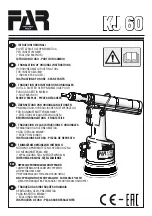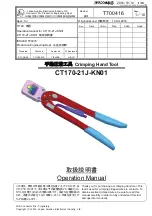
1
Quick-Release Sliding Tail Vise
05G30.01
The Veritas
®
Quick-Release Sliding Tail Vise is a
reworked version of the well-known tail vise that
is generally built into the front apron of many
cabinetmaking workbenches. While workpieces can be
clamped in the sliding jaw, the quick-release sliding tail
vise is primarily used in conjunction with bench dogs,
either on top of the workbench or along the side of it.
The main problem with most sliding tail vises is
that they require a signifi cant amount of work to
install them. Generally, retrofi tting a tail vise onto an
existing workbench requires extreme modifi cations
to the workbench, and a new workbench that is to
incorporate a sliding tail vise must be designed
around the vise’s mechanism.
The Veritas Quick-Release Sliding Tail Vise has been
specifi cally designed to simplify the installation process.
The vise mechanism is mounted onto the underside of
a workbench top and a user-made jaw (e.g., a slab of
material with dog holes) is attached to the mechanism.
This vise features a quick-release mechanism for fast
adjustment of the opening. The positive action of the
mechanism means the vise can be used for spreading
workpieces apart, as well as for clamping them.
As delivered, the vise is confi gured for mounting on
the right end of a workbench; however, it can easily
be reconfi gured for mounting on the left end of
a workbench.
Main Screw
Half Nut
Cam
Handle
Back End Plate
Tee
Guide Rod
Handle
End Cap
Half Nut
Base
Casting
Bushing
Mounting Plate
O-Ring
Quick-Release
Spring
Quick-Release Lever
Quick-Release
Shaft
Front End
Plate
Figure 1: The Veritas
®
Quick-Release Sliding Tail Vise mechanism, shown upside down.
U.S. Pat. No. 9,050,710 and U.S. Des. Pat. No. D671,812























